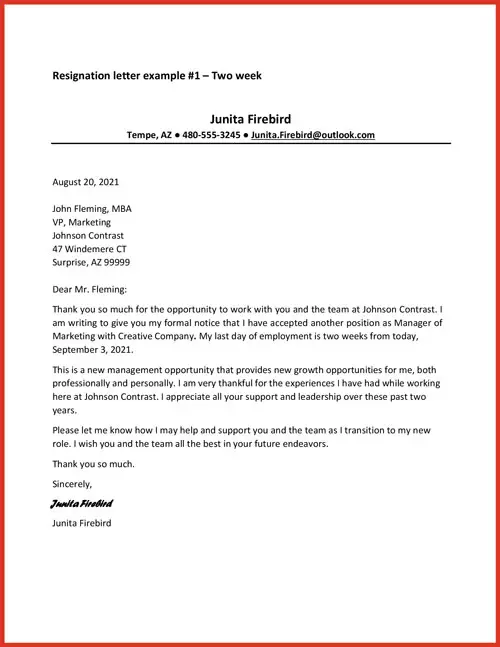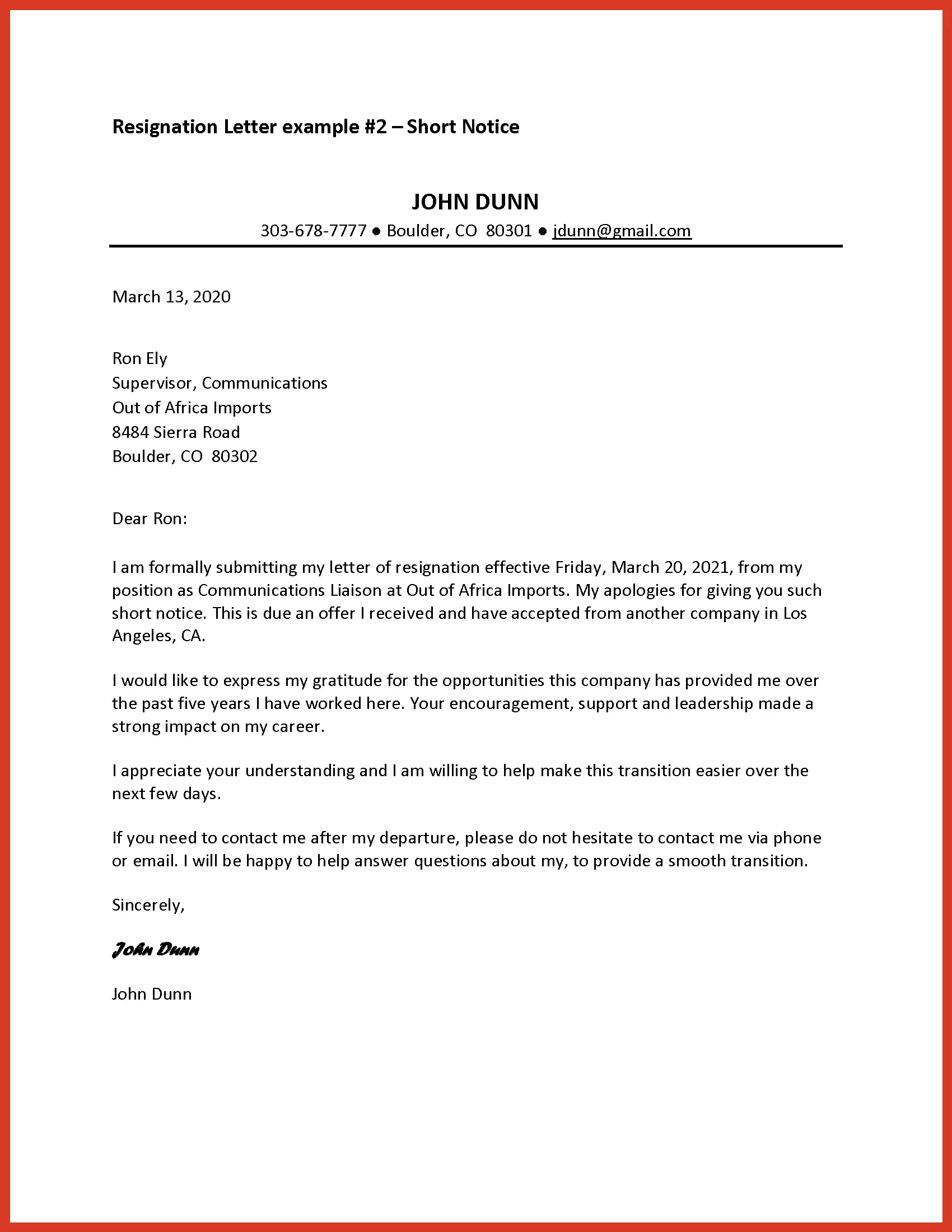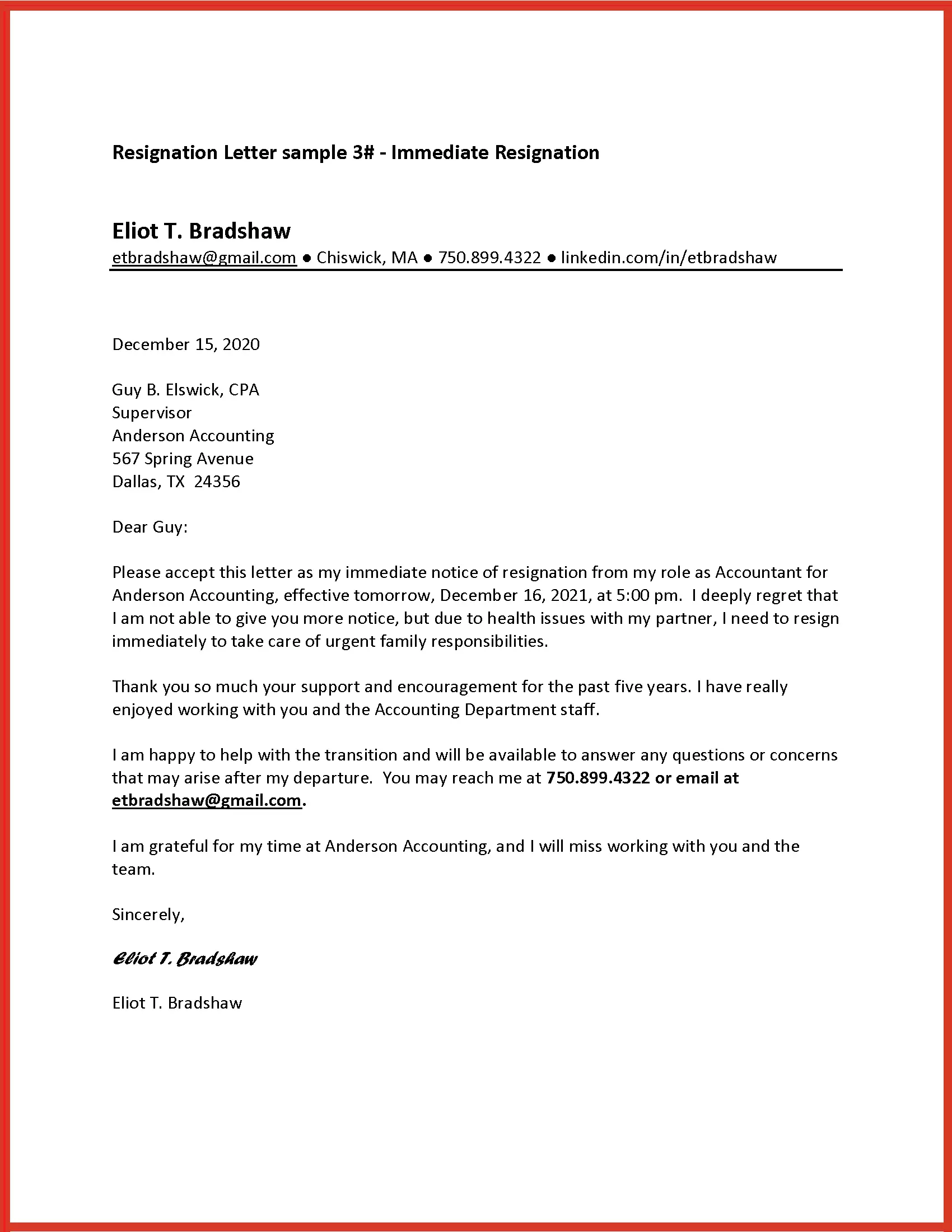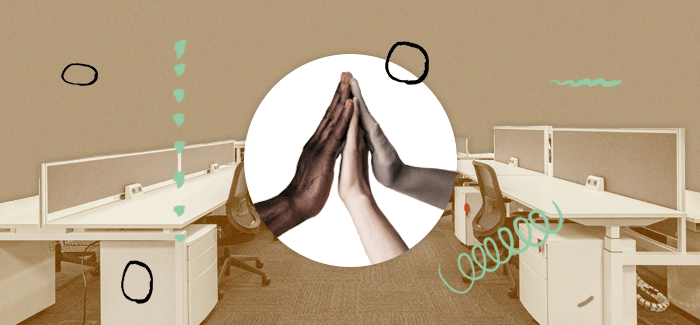How to write a formal resignation letter (with examples)
This article was updated on March 7, 2024.

Written by Michael Feder

Reviewed by Jessica Roper, MBA, director of Career Services at University of Phoenix

While there are plenty of reasons to change careers , taking the time to update your resumé
, apply, interview, and then apply and interview again and again can be stressful.
That doesn’t even factor in the potential stress of finally telling your co-workers and managers that you’re leaving.
While moving on might be the right thing to do professionally or personally, the relationships you developed with your managers and co-workers can make it difficult to do so. One way to lessen the sting is to take a professional approach to your departure, and the first step is writing a letter of resignation.
Understanding why you have decided to resign from a position can help you craft the language that will go into your resignation letter. It’s not always a matter of simply listing your last day, the company name and other technical information. That’s why we sat down with Jamie Johnson, a career advisor at University of Phoenix who has more than 30 years of experience in career coaching. Between her insights and the resignation letter templates included in this article, you’ll be better equipped to make a graceful departure from your organization whenever the time comes.
Why do employees quit?
Bad management? Better opportunities? Let’s count the reasons.
No growth opportunities
Moving up within a company motivates employees to stick with a job. Even if someone might not receive an annual promotion, the sense they can grow is important.
On the other hand, being passed over for a promotion can be disheartening, especially after years with one company. So much so that it might justify leaving.
As Johnson says, employees often find themselves in three stages within a job or career they like:
1. Stay-cate: You like your position and don’t want to move, so you develop new responsibilities closely aligned with your existing role. Example: A marketing assistant designing and spearheading a social media campaign.
2. Update: You like your role but want to grow, so you take your existing position in a new direction. Example: A marketing assistant is promoted to marketing manager, overseeing general marketing operations.
3. Innovate: Your role is old news, so you take your career in a different direction with new responsibilities — and opportunities. Example: A marketing assistant moves to the financial team.
Recognizing where you are in the process can help you make a good decision, including whether to stay or move on. It can also help you in the resignation process by clarifying where you would have liked to grow more and what kind of work you want to perform in the future.
Clashes with management
Understanding and articulating your reasons for leaving isn’t about being critical toward the employer. It’s about relaying in a constructive, professional way why you’re moving on. Your soon-to-be ex-employer may not even be aware of problems that have motivated your resignation. Your resignation letter can serve as an opportunity to address those issues for employees still with the company.
Professional collaboration requires the successful alignment of several personality types , but it may not always work as well as expected. Some employees have horror stories of managers who bullied or humiliated their employees. Others have less dramatic stories that are still negative.
If this sounds familiar, you’re not alone. According to Pew Research, a 2021 survey found that 57% of people quit a job because they felt disrespected at work . While this may or may not be tied directly to management, it’s a strong indication that employees take action when they do not feel supported or respected in their position.
An untenable work–life balance
Johnson has worked with a wide range of people, from experienced professionals to recent high school graduates. She’s noticed a changing emphasis on work–life balance. For some people, spending eight hours in the office and working extra time can feel comfortable and familiar. Other cohorts, such as Gen Z and millennials, tend to emphasize the importance of time spent outside of work.
No matter where you fall on the work–life-balance spectrum, the fact that this spectrum exists is what matters. No one wants to work more than they have to, and even those hardworking employees might think twice if they see co-workers fleeing for greener, more balanced pastures. When businesses can’t cultivate a healthy balance between time on and time off, in other words, employees might search for companies with more progressive policies.
How to write a letter of resignation
Once you fully understand why you’re leaving, it’s time to start writing. A professional resignation letter most importantly outlines the details of your employment and departure.
A letter of resignation provides an easy-to-read format for this information, serving as a record of company name, the length of your tenure at the company and (if you decide to include it) the reason for your resignation. That can be useful for legal purposes, as it lays this information out in plain terms. It’s preferable to resigning over the phone or in person, in which case a letter of resignation might not be produced.
The goal of a good resignation letter is to provide an employer with as much information as possible to ease the transition for both sides. This includes giving your employer enough notice (most commonly two weeks) to find a replacement and sharing an outline of your duties at the company, so your employer has notice as to which skills to seek in a replacement.
If you’re looking to resign, it’s important to be as professional as possible. Even if your work experience has been negative, it’s still essential to write the letter professionally, Johnson says. You might also choose to address your employer by company name instead of directing notice toward a specific person. This further turns the resignation letter into a professional document rather than a personal one.
As you write your letter, the following steps and inclusions will help ensure a professional departure:
1. Heading: Include your contact information (name, address, city, state, ZIP code, phone number and email address).
2. Date: Document the date when you’re writing the letter.
3. Employer contact information: Insert your employer’s name and professional title if using; always include the company name and address.
4. Salutation: Open with a professional greeting. If you have a good relationship with the employer or manager, you might use their first name. But in many cases, it’s best to use their title and last name (e.g., “Dear Ms. Jones”).
5. Opening paragraph: The first paragraph should get straight to the point. State your resignation and provide the effective date. It’s customary to give at least two weeks’ notice unless you have a different agreement with the employer.
6. Second paragraph: You can explain why you’re leaving in the second paragraph, but keep it brief and professional. You’re not obligated to provide detailed reasons for your departure, and sometimes less is more.
7. Third paragraph: This section should focus on the positive aspects of your job. Johnson recommends thanking your employer for the opportunity to work there. Even if it wasn’t your dream job, it’s important to recognize the skills and experiences you’ve gained.
8. Offer of assistance: Offer to help during the transition. You might volunteer to train a replacement or finish any outstanding projects.
9. Closing: Use a professional closing, such as “Sincerely” or “Best regards,” followed by your full name.
10. Signature: If printing your letter, leave a space for your signature and type your full name. If it’s an email, your typed name will suffice.
Remember, keep the letter professional and positive. Even if you’re leaving because of workplace issues, it’s essential to leave on good terms. The resignation letter could be kept in your file and might even be seen by future employers.
Consider the following resignation letter examples:
Click on the image to download our two weeks resignation letter example.
Click on the image to download our short-notice resignation letter example.
Click on the image to download our immediate resignation letter example.
Why is it important to leave a job gracefully?
“Relationships are everything,” Johnson says. She has a number of reasons for believing this. First, your reputation can precede you. Leaving a job on a sour note might make it difficult to get a positive reference for your next job.
Leaving on bad terms can also create personal tension between you and your former manager and co-workers, which can follow you even after you resign. At the end of the day, to resign with grace is the right thing to do if you want to maintain a positive impression with the people you used to work with.
And that positive impression has potential to pay off. For example, when former co-workers have a positive memory of you, they are more likely to speak on your behalf. This can open opportunities for career development that you may not be able to foresee right now.
Resigning professionally isn’t always easy, but it can make the transition period between employment easier. Writing a resignation letter shows that you are willing to resign without personal conflict. It also suggests you have both the attitude and maturity that can make your future employment much more pleasant and productive.
In short, leaving a job with grace sets the foundation for a fresh start that can build a network of potential opportunities now and in the future.
Career resources at University of Phoenix
Don’t embark on your career journey alone! University of Phoenix equips its students and graduates with the following resources to help them on their professional paths.
- Career Services for Life® commitment: Available to UOPX students and graduates, this offering comprises complimentary career coaching, including guidance on how to build a personal brand and write a resumé.
- Free career resources
: Browse a range of downloadable guides and templates to help you optimize your LinkedIn® profile, get ready for a job interview and write a resumé and cover letter.
- Career With Confidence® newsletter: Get career insights every week via UOPX’s LinkedIn newsletter.
LinkedIn is a registered trademark of LinkedIn Corporation and its affiliates in the United States and/or other countries.

ABOUT THE AUTHOR
A graduate of Johns Hopkins University and its Writing Seminars program and winner of the Stephen A. Dixon Literary Prize, Michael Feder brings an eye for detail and a passion for research to every article he writes. His academic and professional background includes experience in marketing, content development, script writing and SEO. Today, he works as a multimedia specialist at University of Phoenix where he covers a variety of topics ranging from healthcare to IT.

ABOUT THE REVIEWER
Jessica Roper, University of Phoenix director of Career Services, is a seasoned leader with over 15 years of experience in leadership within higher education. She has honed her expertise in student services and career development and is passionate about helping others discover and refine their skills.
This article has been vetted by University of Phoenix's editorial advisory committee.
Read more about our editorial process.
Read more articles like this:






